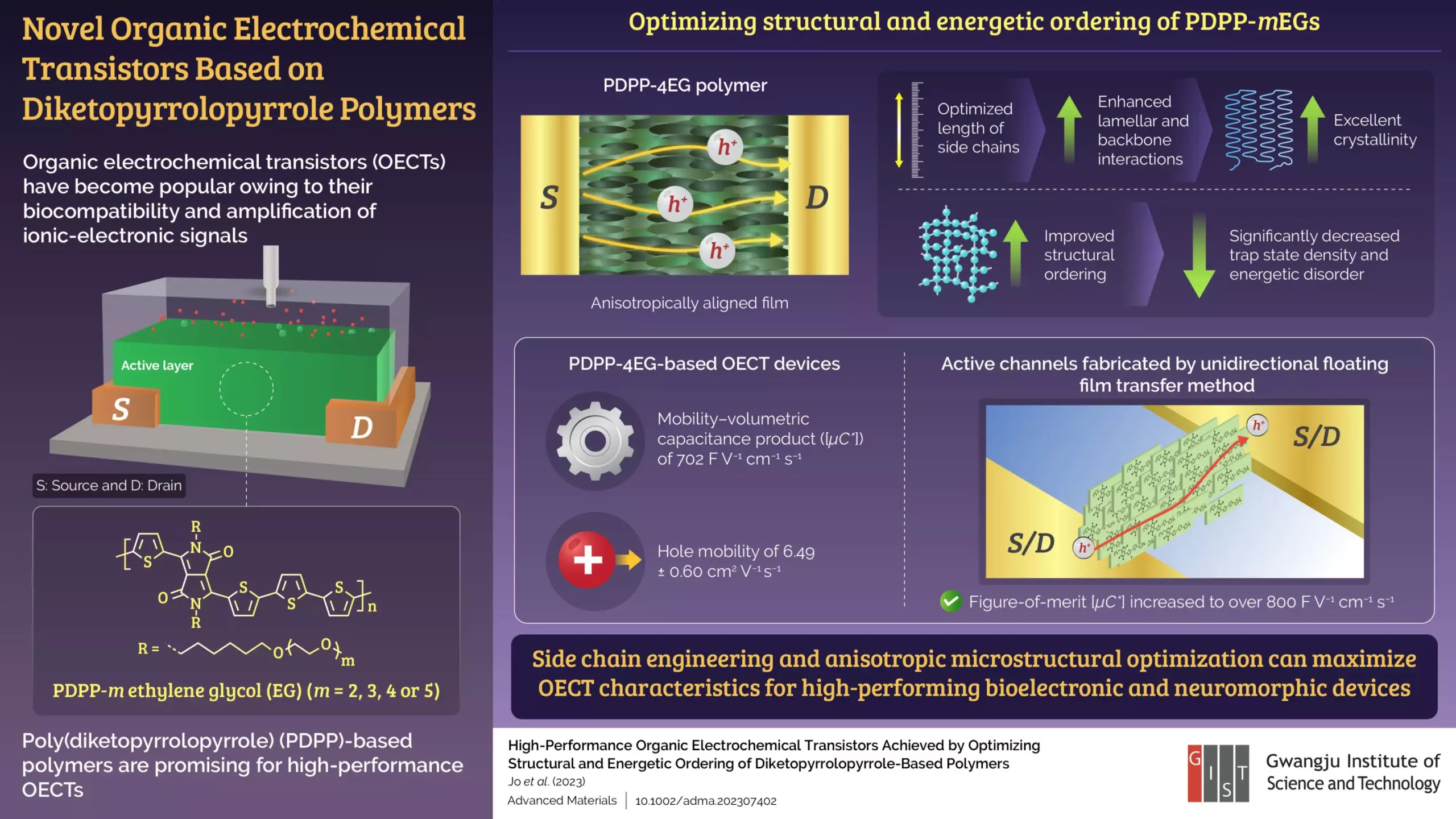Organic electrochemical transistors (OECTs) have been gaining significant interest and attention in the research community due to their unique characteristics, including biocompatibility, ionic-electronic signal amplification, and ion and molecule detection capabilities. To achieve these characteristics, it is essential for OECTs to efficiently transport both ions and electrons. Conjugated materials with hydrophilic glycol chains have shown promising levels of efficiency while maintaining softness and allowing ions to permeate through their surfaces. However, these materials often exhibit imperfect semicrystalline characteristics and disordered fractions when converted into solid films.
A group of researchers led by Professor Myung-Han Yoon from Gwangju Institute of Science and Technology, Korea, conducted a study to develop high-performance OECT devices based on poly(diketopyrrolopyrrole) (PDPP)-type polymers as active layers. They focused on optimizing the steady-state performance of OECTs by utilizing molecular design and structural alignment to reduce energetic and microstructural disorders in the films. The researchers modulated the number of repeating units of ethylene glycol (EG) side chains in PDPP and chose the figure-of-merit as the product of the charge carrier mobility and the volumetric capacitance.
Through ultraviolet-visible (UV-vis) absorption spectroscopy, the researchers confirmed the formation of J-aggregates in the PDPP polymers with varying EG side chains. Cyclic voltammetry measurements revealed a gradual decrease in oxidation onset values with an increase in the number of EG polymers. Electrochemical impedance spectroscopy showed similar volumetric capacitance values for all polymers in the PDPP family, leading the researchers to primarily focus on charge carrier mobility as the distinguishing factor for performance evaluation.
The OECT device based on PDPP-4EG, fabricated through spin casting, demonstrated optimal performance. It achieved a figure-of-merit value of 702 F V-1 cm-1 s-1, a charge carrier mobility of 6.49 cm2 V-1 s-1, and a transconductance value of 137.1 S cm-1. Additionally, it exhibited low subthreshold swing values of 7.1 V dec-1 and a minimal number of interface trap states.
To optimize structural alignment along the OECT channel, the researchers utilized the unidirectional floating film transfer method (UFTM). When the polymer film was added to a hydrophilic liquid, the J-aggregates underwent unidirectional compression. The resulting UFTM PDPP-4EG film-based OECTs showed remarkable performance, with a figure-of-merit value exceeding 800 F V-1 cm-1 s-1.
Professor Myung-Han Yoon highlighted the long-term implications of this study, emphasizing the potential for the development of neuromorphic devices in the era of artificial intelligence. Organic mixed conductors, including the PDPP-4EG material studied, hold high potential for advancements in this field. The development of organic mixed conductors with high reliability can have wide-ranging applications, such as next-generation wearable sensors, computers, and healthcare systems, ultimately enhancing human convenience.
The study conducted by Professor Myung-Han Yoon and his team at Gwangju Institute of Science and Technology explored the use of PDPP-type polymers with varying EG side chains to create high-performance OECT devices. By optimizing molecular design, structural alignment, and utilizing the unidirectional floating film transfer method, they achieved significant improvements in the figure-of-merit values and overall performance of their OECT devices. This research contributes to the ongoing efforts to enhance the performance of organic materials and their potential applications in various domains, including neuromorphic devices, wearable sensors, computers, and healthcare systems.


Leave a Reply